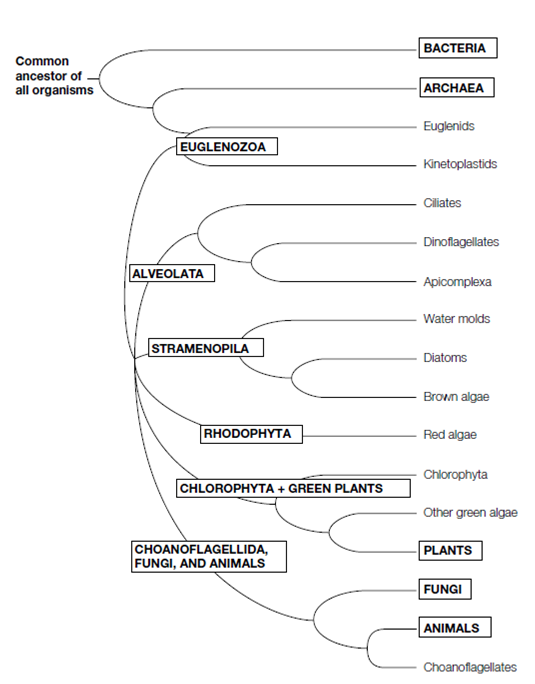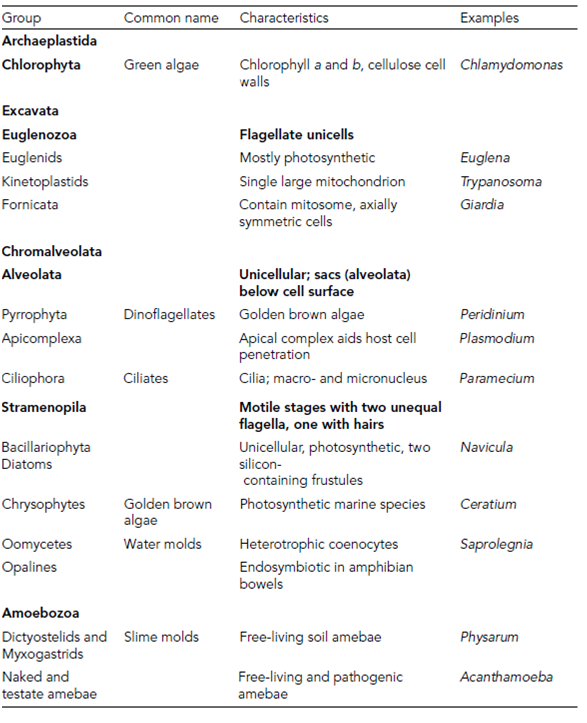Structure of the Archaeplastida: chlorophytes
The Archaeplastida contain the blue green algae, green algae, red algae, and higher plants. Only the green algae, the chlorophytes, are considered to be eukaryotic microor- ganisms. The chlorophytes are a monophyletic group and they range in complexity from unicellular motile or nonmotile organisms to sheets, filaments, and coenocytes. They are found in fresh and salt water, in soil, and on and in plants and animals. Most chlorophytan cell walls are formed from cellulose and they may be fibrillar, similar to those of the fungi, and sometimes impregnated with silica or calcium carbonate.
Chlorophytan cells contain nuclei, mitochondria, ribosomes, Golgi, and chloroplasts. The internal cell structure is supported by a network of microtubules and endoplasmic reticulum. Chloroplasts in this group are very variable structures; they can be large and single, multiple, ribbon-like or stellate chloroplasts with chlorophylls

Figure: Current taxonomic scheme for the Archaeplastida, Excavata, and Chromalveolata
a and b and carotenoids and they store starch. Chlorophytan cells have a vegetative phase that is haploid, and sexual reproduction occurs when cells are stimulated to produce gametes instead of normal vegetative cells at binary fission.They often possess flagella that have a 9 + 2 microtubule arrangement within them. There may be one or two flagella per cell, which may be inserted apically, later- ally or posteriorly and trail or girdle the cell. The flagellum can be a single whiplash or it can have hairs and scales. The presence of eyespots near the flagellar insertion point allows the cell to swim towards the light. Movement may be by lateral strokes or by a spiral movement that can push or pull the cell through the water.
Table 1. Characteristics of the major monophyletic groups of the Archaeplastida, Excavata, Chromalveolata, and Amoebozoa
